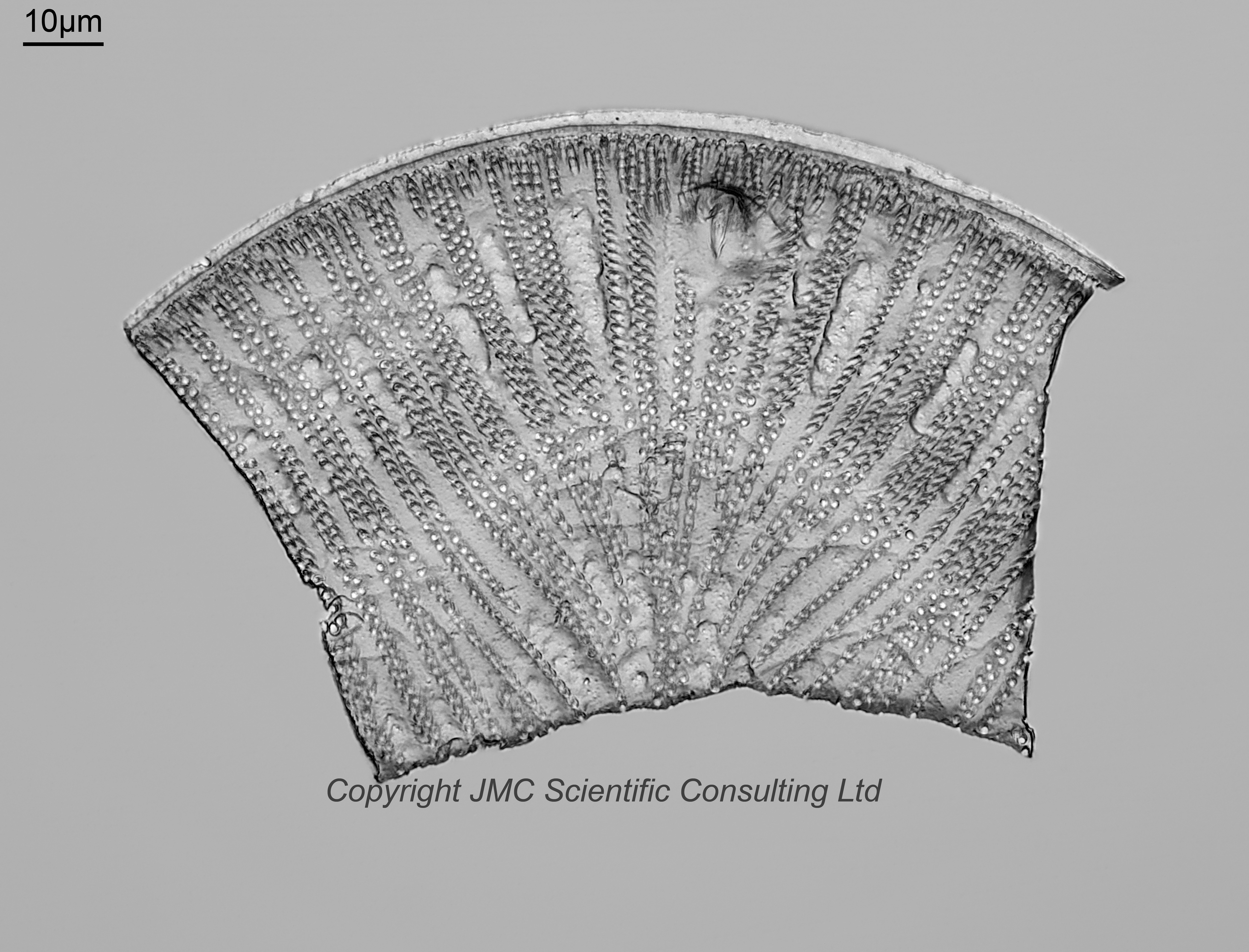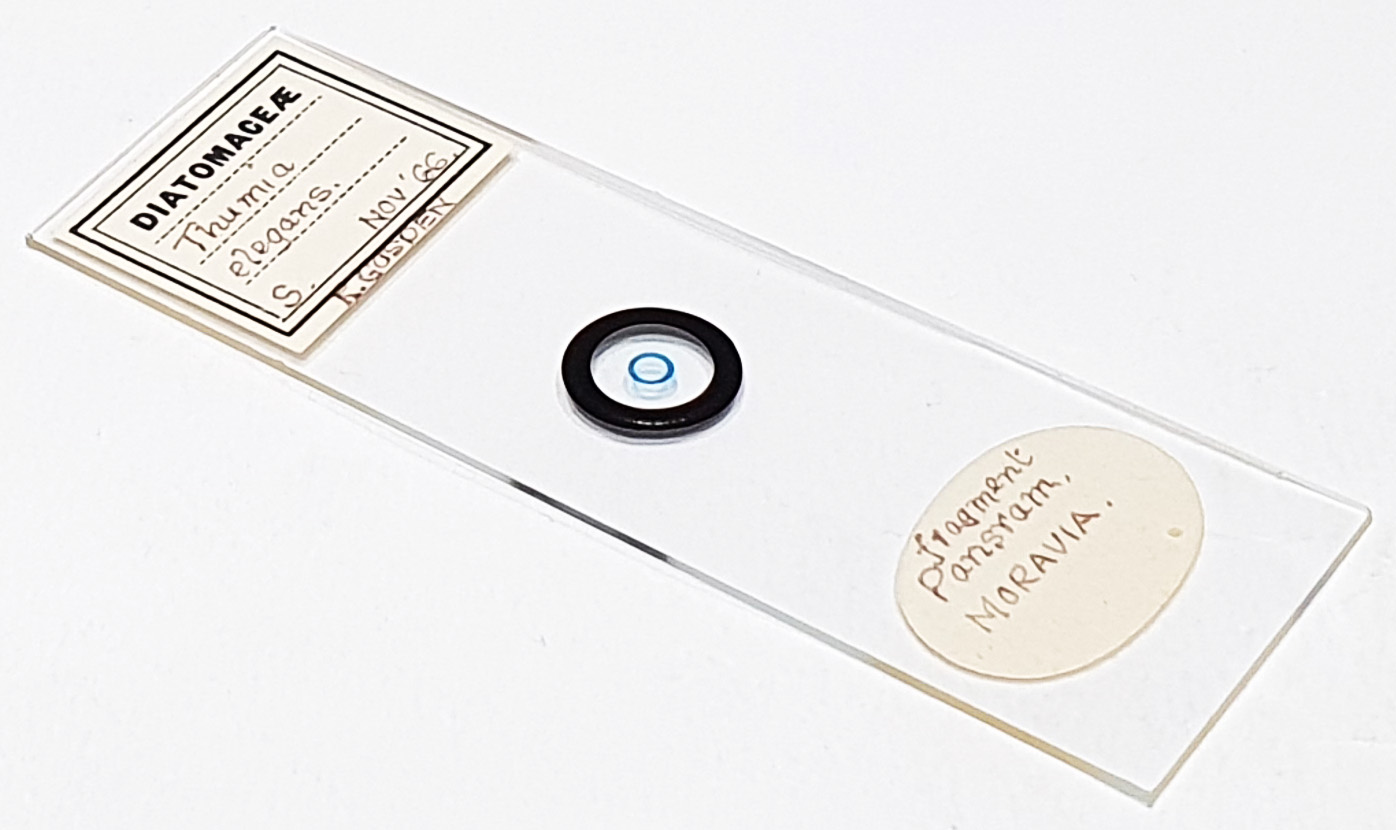

A fragment of Thumia elegans from Pansram, Moravia. More on the name and location in a minute. Dated November 1966. Prepared by Richard Gosden. Olympus BHB microscope using 450nm LED light. 63x Leitz Pl Apo 1.4 objective, oil immersion. Olympus Aplanat Achromat condenser, oil immersion, oblique lighting. 2.5x Nikon CF PL photoeyepiece. Monochrome converted Nikon d850 camera. 52 images stacked in Zerene (Pmax).
Back to the name and location. It was published in: Taylor, F.B. (1929). Notes on diatoms An introduction to the study of the Diatomaceae. pp. [1-iv], [1]-269, 5 pls. Bournemouth: [published by the author], printed at the Guardian Press. More recently, the paper Williams, D.M. (2021). Notes on the diatom collection of the Natural History Museum, London (BM) II–IV. Some type specimens in the genus Aulacodiscus Ehrenberg and nomenclatural notes on Thumia Cleve ex F.B. Taylor. Phytotaxa 480(2): 152-162, 34 figs, went into greater detail. In this the location is described as the Czech Republic, Pouzdřany (= Pausram), South Moravia. Synonyms: Aulacodiscus gutwinskii Pantocsek 1909, Aulacodiscus splendidus Hustedt, Thumia gutwinskii (Pantocsek) D.M. Williams, nov. comb..
A very unusual looking diatom, and I can certainly see the ‘Aulacodiscus‘ feature with the process. It must be very impressive to see an intact one, as this is one big diatom.